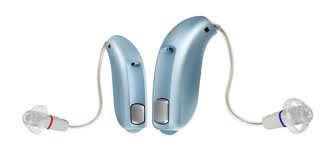
It is important to note that just fitting two wide dynamic range compression (WDRC) hearing instruments for a patient is not a surefire way to provide each benefit listed above. But, as Holmes also asserts, the benefits of fitting hearing instruments for both ears far outweigh the costs, in nearly all cases-and especially as patients age and as hearing loss progresses. One such consideration is binaural interference due to the coexistence of hearing loss and certain auditory processing disorders (for a review, see Holmes 2003 16). Of course, as with any broad-stroke recommendation involving humans, there are a few patient considerations that may preclude successful use of binaural amplification as compared to unilateral.

14 In fact, sequentially fitting one hearing aid after the other was already fitted resulted in reduction of use for both hearing instruments.Īdditionally, the results of a relatively recent study involving veterans as participants provided further support for the argument that two hearing instruments are better than one in terms of speech perception in noise.

A study published in 2014 concluded that patients fitted with both hearing instruments at the same time were more compliant with their usage than those who were fitted with one hearing instrument initially and the other a month later. The long answer is that a partial list of benefits arising from bilateral amplification includes:ġ) Better localization abilities, or the ability to decipher the location of sound sources 1-3 Ģ) Improved speech intelligibility in noise, 4-6 in part due to better spatial release from masking 7 ģ) Prevention of auditory deprivation of the unaided ear, when that ear also has aidable hearing loss, 8-12 which may result in decreased speech recognition for the unaided ear 11 andĪlthough much of these benefits are findings from older studies, new research in bilateral versus unilateral fittings continues to emerge.
Binaural amplification hearing aids professional#
When patients with bilateral hearing loss inquire, “Do I need hearing instruments for both ears?” the typical response of the hearing professional may be simply stated as: “Yes, because you have hearing loss in each ear.”īut, as we know, the complete answer to this question extends far beyond this 5-second response. The benefits of bilateral hearing aid fitting-that is, the real-world advantages provided when a hearing instrument is fitted for each ear in the common case of aidable hearing loss diagnosed for both ears-are generally well accepted. Previous research and current movement in the endeavor to provide the most natural, binaural auditory experience for hearing instrument users will be discussed, in addition to the technological developments that have made these advances possible. Tech Topic: Binural Fittings | Hearing Review July 2014


 0 kommentar(er)
0 kommentar(er)
